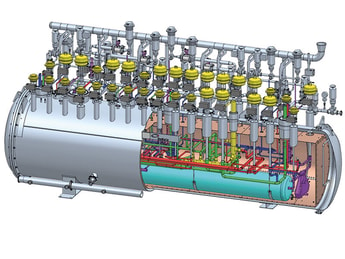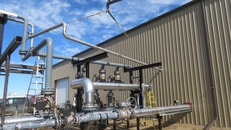An introduction to…Helium conditioning equipment
Helium, after hydrogen, is the most abundant element in the universe. It was discovered by Pierre Janssen and Norman Lockyer while they were studying an eclipse of the sun.
Production of helium can be achieved by cryogenic distillation from natural gas. However, due to its extremely low density, once helium is released into the atmosphere, it will generally be lost forever.
Helium is well known as a lifting gas in party balloons, but it has many more serious applications, such as in superconducting magnets, laser applications, leak detection, scientific equipment, gas-cooled reactors (GCR), and many more. In its liquid state, Hhelium (LHe) is used for cooling down electronic devices or for facilities that require extremely low temperatures (1.8 to 4K). Nowadays, these special cryogenic systems play an important role in international projects like ITER, CERN, FAIR and ESS. Either the goal is to prove the fundamental structure of the Universe (CERN), or to find out how DNA sustains life (ESS). The LHe equipment behind these research projects comes with its own challenges.
... to continue reading you must be subscribed























